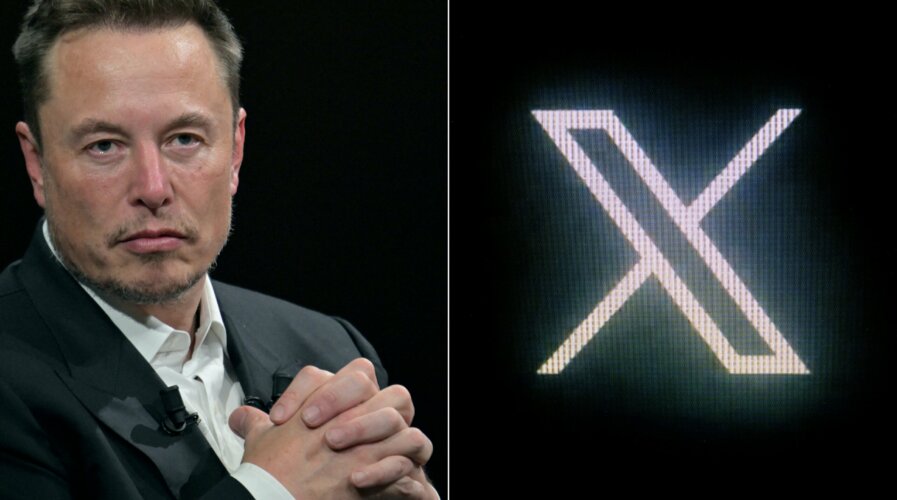
Elon Musk’s tech revolution: Blending AI openness with Neuralink’s advances (Source – AFP)
Elon Musk takes AI and brain chips mainstream with Grok and Neuralink
- Elon Musk is revolutionizing tech with xAI and Neuralink, extending AI chatbot Grok to all X premium subscribers and breaking new ground in brain-computer interface technology.
- Neuralink showcases the potential of brain-computer interfaces with a patient playing chess through mind controls.
Elon Musk has declared that his artificial intelligence startup xAI will extend access to its chatbot Grok to all premium subscribers of the social media platform X. This announcement, made in a post on X, does not delve into further details but signifies a shift from the chatbot’s previous limitation to Premium+ subscribers. Amidst advertisers withdrawing from X, Musk is pivoting away from advertising revenue, focusing instead on enhancing subscription services.
In a move that critiques the profit-oriented use of technology by major tech firms such as Google, Musk plans to make Grok open-source. This follows his lawsuit against OpenAI, where he accuses the organization of straying from its non-profit roots towards profit-driven motives. By open-sourcing Grok, Musk aligns xAI with entities like Meta and France’s Mistral, which have also made their AI models publicly available, encouraging innovation and engagement from the wider community.

Elon Musk posted the availability of Grok for all premium subscribers (Source – X)
What’s going on with Elon Musk and the world of AI development?
Moreover, Musk’s legal confrontation with OpenAI, which he co-founded and eventually left, highlights his concerns about the ethical trajectory of AI development. Despite previously endorsing profit-focused strategies, including a merger proposal with Tesla, Musk’s latest initiatives and comments, especially at the AI Safety Summit in the UK, advocate for ethical AI development and the adoption of open-source principles, with the aim of developing a “maximum truth-seeking AI” at xAI.
This strategic direction not only challenges the methodologies of OpenAI and Google but also ignites a debate among technology leaders and investors about the implications of making AI technology open-source. While such transparency can foster innovation, there are concerns about its potential misuse, underscoring the balance between technological advancement and ethical considerations.
As reported by BBC, Elon Musk’s Neuralink has showcased its first patient, who, using a brain implant, controlled a computer cursor and played online chess. In a nine-minute live stream on X, viewers witnessed Noland Arbaugh, paralyzed below the shoulders due to a diving accident, using the device. Arbaugh, who received the chip in January, described the surgery as “super easy.”

A demonstration of the controlled a computer cursor and played online chess through the brain (Source – X)
Arbaugh also recounted playing the video game Civilization VI for eight hours straight, facilitated by the brain implant, though he mentioned encountering some issues with the technology. The Neuralink device, about the size of a one-pound coin, is designed to be inserted into the skull, with tiny wires that can read neuron activity and send wireless signals to a receiver.
Following trials in pigs and demonstrations of monkeys playing a basic version of Pong, the FDA approved Neuralink for human testing in May 2023. Neuralink is among a growing number of firms and academic departments pushing the boundaries of brain-computer interface (BCI) technology.
In a parallel development, the École Polytechnique Fédérale in Lausanne, Switzerland, enabled paralyzed individual Gert-Jan Oskam to walk by simply thinking about moving, using electronic implants on his brain and spine that wirelessly relay thoughts to his legs and feet, as reported in Nature.
BCIs aim to capture some of the electrical impulses generated by the brain’s approximately 86 billion neurons, which facilitate movement, sensation, and thought. These impulses can be detected by non-invasive caps or directly via implanted wires, drawing significant research investment.
Musk has boldly claimed that Neuralink’s technology can restore sight in monkeys, branding this technology as “Blindsight.” He envisions this technology, initially offering low-resolution vision akin to early video games, eventually surpassing human visual capabilities. He assures that the procedures have been safe for the animals involved.
Neuralink’s advancements, including the “Telepathy” product enabling mind-controlled computer use, mark significant strides in the field. Following FDA approval for its first human trial, Neuralink released a video showing a quadriplegic patient playing chess through mind control, demonstrating the implant’s potential through 64 flexible threads that record and transmit brain signals.
Challenges and advances: Neuralink’s journey to human trials
According to Reuters, a U.S. health policy lawmaker has queried the FDA about its prior inspection of Neuralink, before approving it for human trials. This follows reports of issues discovered during inspections related to animal testing practices at Neuralink. These findings emerged shortly after Neuralink announced FDA clearance for human testing of its brain implants, which enable paralyzed individuals to control computers with their minds.
Representative Earl Blumenauer expressed concerns in a letter to the FDA about overlooked evidence from animal testing violations dating back to 2019. He questioned how the FDA reconciled these reports with its decision to authorize Neuralink’s human trials, amidst allegations of rushed experiments leading to unnecessary animal suffering and potential data integrity risks.
In response, the FDA indicated it would directly address Blumenauer’s inquiries, noting its post-approval inspection did not identify any significant safety concerns for the trial. Neuralink, having commenced human testing, recently demonstrated the implant’s capabilities in a live stream, highlighting the potential of brain-computer interfaces despite regulatory and ethical scrutiny.
This exploration into brain-computer interface technology, with companies like Synchron and Blackrock Neurotech also advancing in human trials, demonstrates the potential for patients to control digital interfaces solely through thought. The investigation into Neuralink’s regulatory approval underscores the critical balance between innovation in medical technology and the necessity of maintaining safety and ethical standards.
As the field progresses, the discussions around Neuralink’s practices and the FDA’s oversight reflect broader questions about the pace of technological advancement and the frameworks needed to ensure its responsible development.
The scrutiny faced by Neuralink, arising from concerns over its animal testing procedures and the subsequent approval for human trials, brings to light the challenges of pioneering medical devices within the rapidly evolving domain of brain-computer interfaces. It emphasizes the importance of rigorous regulatory processes that not only facilitate technological breakthroughs but also safeguard the welfare of both animal subjects and human participants.
READ MORE
- 3 Steps to Successfully Automate Copilot for Microsoft 365 Implementation
- Trustworthy AI – the Promise of Enterprise-Friendly Generative Machine Learning with Dell and NVIDIA
- Strategies for Democratizing GenAI
- The criticality of endpoint management in cybersecurity and operations
- Ethical AI: The renewed importance of safeguarding data and customer privacy in Generative AI applications


